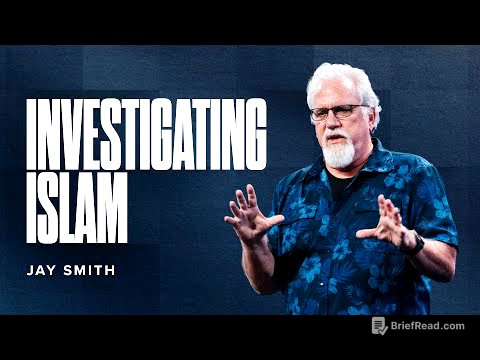TLDR;
This video explores the concept of evolution through the lens of the "selfish gene" theory. It begins by questioning why poop smells bad to humans but appealing to flies, illustrating that traits are selected based on their impact on gene survival. The video then journeys back to the origins of life, simulating the emergence of replicators and the role of mutation and natural selection. It explains that genes, as the fundamental units of selection, drive the development of survival mechanisms, including complex organisms. The video also addresses criticisms of the selfish gene theory, such as the role of genetic drift and the oversimplification of gene function, while emphasising its power in understanding the diverse behaviours observed in nature.
- Natural selection acts primarily on genes, not individuals or species.
- Altruistic behaviours can be explained by kin selection, where helping relatives promotes the survival of shared genes.
- The selfish gene theory, while controversial, provides a powerful framework for understanding evolution.
Why does poop smell bad? [0:00]
The reason why poop smells bad to humans is because it contains bacteria that can be life-threatening. If humans found the smell appealing, they would be more likely to get sick, die, and not pass on their genes. Flies, however, are attracted to the smell because poop is a source of nutrients for them. This illustrates that traits are selected based on their impact on gene survival.
The Beginning Life [2:51]
The video simulates the early Earth, where simple compounds (blobs) randomly gain energy and combine to form more complex structures. Most of these combinations fail, but occasionally, a stable compound emerges. Over time, one of these compounds becomes a replicator, attracting similar blobs from the environment to create copies of itself. This spontaneous replication marks the birth of the first replicator, a lifeless molecule without intent or purpose.
What is gene mutation? [7:15]
During replication, errors occur, leading to mutations. These mutations can be harmful, beneficial, or neutral. Harmful mutations might make the copy less stable, while beneficial mutations could improve replication. Neutral mutations have no significant effect. The emergence of mutations marks a crucial milestone, leading to multiple species of replicators competing for limited resources.
Simulating Evolution [8:01]
The video simulates a battle between replicators with different traits, such as spawn rate, death rate, replication rate, and mutation rate. The simulation shows that the replicator with the best combination of traits for the environment wins, highlighting the role of natural selection. Limited resources are introduced, creating competition and influencing which replicator prevails. The environment plays a significant role in determining the outcome of the replicator battle.
How natural selection works [13:25]
The winning replicator typically has a high replication rate, a low death rate, and a low mutation rate. Replicators may also develop traits that allow them to destroy others or build protective barriers. These traits shape the environment and increase the chances of survival. Over billions of years, replicators evolve complex survival machines, which are the bacteria, plants, fungi, and animals we see today.
What do we pass on? [16:39]
Living organisms are survival vessels for replicators, now known as genes. Genes are strands of DNA that shape our traits. Natural selection favours genes that produce traits well-suited to their environment. It's fundamentally about the survival of the fittest genes, which are the core unit of natural selection. Genes are the right size to independently influence a trait and be faithfully copied into future generations.
Kin Selection [19:40]
Altruistic behaviour, such as alarm calls in California ground squirrels, can be explained through kin selection. Females give alarm calls to warn relatives, even at personal risk, because relatives share their genes. If the warning call saves at least two copies of those genes in relatives, it's a good trade-off from the gene's perspective. Kin selection depends on how related individuals are, as closer relatives are more likely to share the same genes.
The Selfish Gene [22:04]
Richard Dawkins' book "The Selfish Gene" popularised the idea that every trait is a strategy to help genes survive and replicate. Genes that maximise their own survival propagate best, even at the expense of others. However, this framework has faced criticisms. One criticism is that it implies every gene is actively selected for, ignoring the role of genetic drift, where gene variants shift in frequency due to random chance. Another criticism is that the term "selfish" implies agency, which genes do not possess.
It’s all a simulation [25:35]
The selfish gene theory is an oversimplification, as genes are more complex than initially thought. One gene can influence many traits, and one trait can be influenced by many genes. The environment also affects how genes are expressed. Despite these complexities, the selfish gene theory provides a powerful lens for understanding evolution. It helps explain the range of behaviours observed in the world, as traits tend to increase the prevalence of associated genes.









